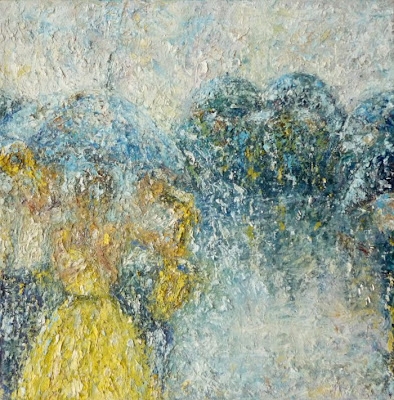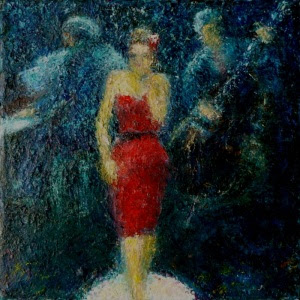As a sculptor who works in bronze I must start by complimenting the
Royal Academy. The audio visual displays in Gallery 2 helpfully and successfully explains what is the complex process of bronze casting, using models of each stage and short but informative videos. However I have to say I found that the video of the Indian foundry where they were pouring molten bronze in bare feet, made me wince!
The exhibition includes some of the finest examples of bronze sculpture from the past 3,500 years and is organised thematically rather chronologically with separate galleries for Figures, Animals, Objects, Gods, Heads and Reliefs. In scale they range from tiny objects of adornment to over-life size figures some 2.5m tall. Both aesthetically and technically there are some major tour de force works on display but the highlights for me were the pieces which spoke to me, some of the oldest and arguably simplest.
First of all there was the elongated
Etruscan Votive Figure, Evening Shadow (Cat 32) which apparently was a work which influenced Giacometti. You can see how and why straight away. The notion of the cast shadow has intrigued human beings from time immemorial and in this case from the second century BC. Then there were two wheeled pieces, the 7th century BC
Cult Chariot of Strettweg (Cat 22) and the
Chariot of the Sun (Cat 7) from the 14th century BC, which combine amazing craftsmanship with powerful symbolism. Another Etruscan piece caught my eye, the
Christophe Cista from 350BC (Cat 27) with impressive engraving and a charming grouping of two figures carrying a female figure on top.
In the Reliefs Gallery the inlaid bronze of the first century BC,
Mensa Isiaca altar table top (Cat 39), stood out. And the almost primitive series of four 6' tall bronze panels, an exercise in progressive reduction over 20 years, by Matisse in
Backs I-IV (Cat 142) were fascinating. There is also an interesting comparison in approach to Portraits between the simplicity of
Medardo Rosso's Ecce Puer and the ornate extravagances of materials in Charles Henri-Joseph-Cordier's
Jewess from Algeria (Cat 133).
The "Bronze" exhibition is testament to Man's skill, imagination and ambition in creating lasting objects of wonder for thousands of years in this material which still has the power to enchant us today. The
exhibition runs until 9th December 2012.
And if, having seen the exhibition, it gives you the taste for owning some bronze sculpture you can always visit my web-site to see the pieces I currently have for sale by clicking
here. As well as being, I hope, visually attractive most of my work is also highly tactile, the sensation of touch being an important aspect of my sculptures in bronze, and in stone for that matter.

















































